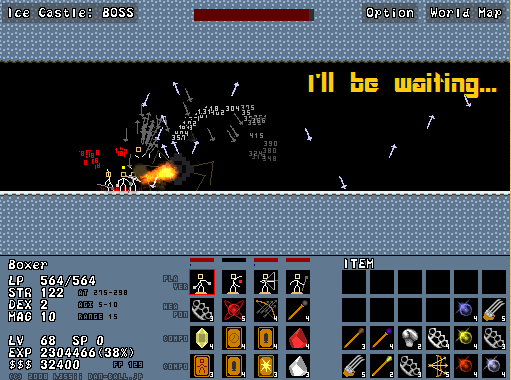
- #Magician stick ranger wiki plus
- #Magician stick ranger wiki download
Some of this SRAM can be used for metadata but if a controller has no external DRAM it is considered DRAM-less (note: some controllers may have a small amount of embedded SDRAM as well, but still lack an external DRAM chip and are "DRAM-less"). This is faster than DRAM but more expensive so most controllers only have about 32 million bytes or 32MiB of SRAM at most. SSD controllers will have some amount of SRAM, or static random-access memory (static as in it does not need to be refreshed like DRAM/SDRAM), embedded in their design.Enterprise drives often have power loss protection but it's wise for consumers to have an uninterruptible power supply (UPS) and surge protection if possible. * In the context of SSDs volatile memory is utilized to temporarily cache the controller's firmware, store information from read-only memory (ROM) for debugging, manage controller functions including commands/instructions and data, temporarily store boot code, and store various metadata ("data about data") for use with the flash translation layer (FTL). Memory is volatile when it loses its data or contents on power loss. The bus is used to primarily send commands and transport data. This is related to the MT/s of the flash and maximum support of the controller (see below). the flash) may communicate though a bus per channel with limited bandwidth. The controller and other elements of the SSD (e.g.This results in total data path protection ( source, pp.8-9) including a parity check.
#Magician stick ranger wiki plus
in a LIFO or FIFO fashion), plus error correction and defect management at multiple levels (SRAM, DRAM, NAND, etc) that work in tandem with the main processes.
Controllers have many other components including buffers, registers (e.g. Specific core configuration can impact the drive's performance profile, for example with cores specialized for reads, writes, and host interaction as with Samsung's MJX and UBX or co-processors like with Phison's CoXProcessor. More cores usually means higher input/output operations per second (IOPS) and better overall performance. Current consumer controllers can have anywhere from one to five cores and generally clock in the 500-800 MHz range. An example of a possible alternative foundation would be RISC-V or Argonaut RISC Core (ARC), the latter which is used in SMI's SATA controllers as an example. Other common ARM chips include those used in the Raspberry Pi. Many embedded devices, such as your smartphone, also rely on ARM microprocessors this particular variant is optimized for real-time applications with a need for low latency, such as with storage. Most current controllers are based on some form of Advanced RISC Machine (ARM) with the Cortex-R5 being the most popular. ECC engine, as would befit an application-specific integration circuit (ASIC)). (be aware of other included elements, e.g. The controller manages everything on the drive and could be used as shorthand for microcontroller, a specialized type of microprocessor or reduced instruction set computer (RISC) that manages the drive and flash. The basic structure ( source, pg.3) of a SSD contains several components that are further explained below. Understanding the value and interaction of these different parts will help you recognize which SSD is right for you. The choice and combination of these components determines the drive's performance and its intended role. Solid state drives, or SSDs, are non-volatile storage devices generally made up of a few basic components. #Magician stick ranger wiki download
: v2.0 Primary website with resources Compilation of most source documents: Download Other types of flash/memory, consoles, key:value.Manufacturing: number of layers, string-stacking, split-cell.
 Organizations & standards: JEDEC, ONFI, SNIA, JTAG. Other aspects #2: organizations, manufacturing, security & optional features, memory types. Other aspects #1: tiering, caching, SSHDs, RAID, PCIe bifurcation. Additional concepts #4: Tables, page and block status, metadata compression, subpages. Additional concepts #3: TRIM, maintenance, wear-leveling, garbage collection, power-on. Additional concepts #2: channels/banks, chip enable/chip select.
Organizations & standards: JEDEC, ONFI, SNIA, JTAG. Other aspects #2: organizations, manufacturing, security & optional features, memory types. Other aspects #1: tiering, caching, SSHDs, RAID, PCIe bifurcation. Additional concepts #4: Tables, page and block status, metadata compression, subpages. Additional concepts #3: TRIM, maintenance, wear-leveling, garbage collection, power-on. Additional concepts #2: channels/banks, chip enable/chip select. 
Additional concepts #1: reading, program/erase. Compilation of most source documents: Download.






 0 kommentar(er)
0 kommentar(er)
